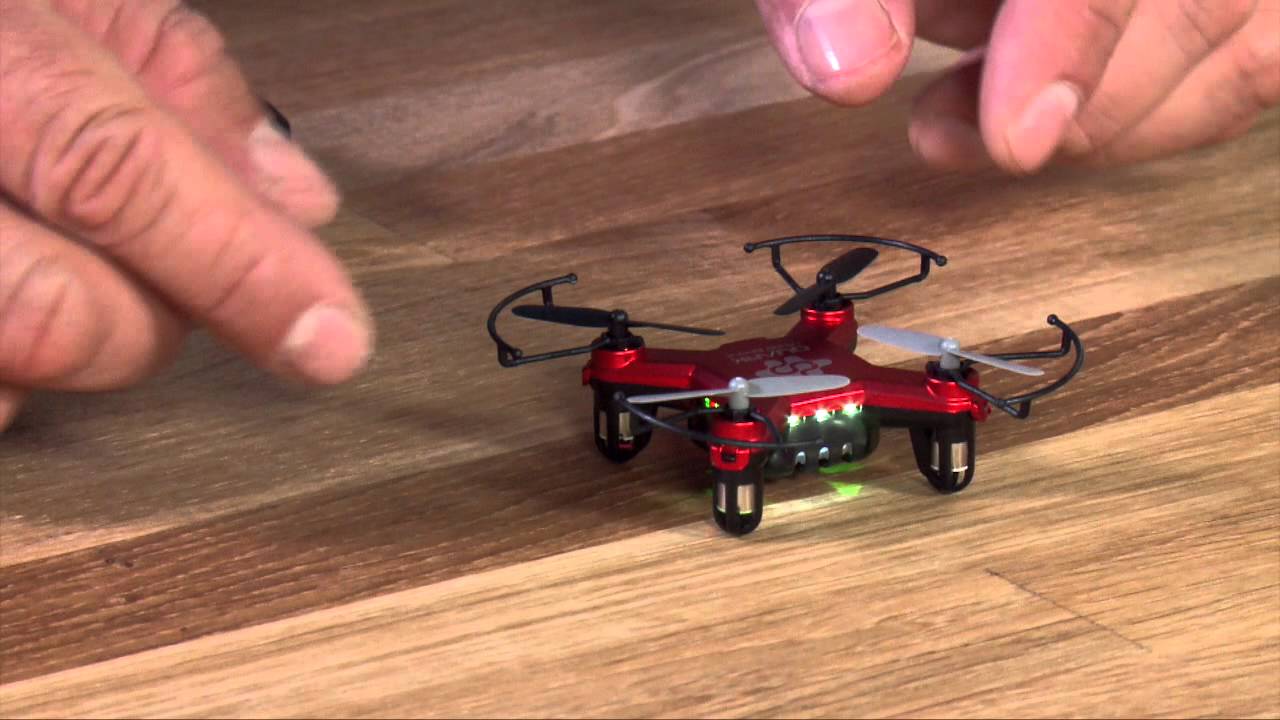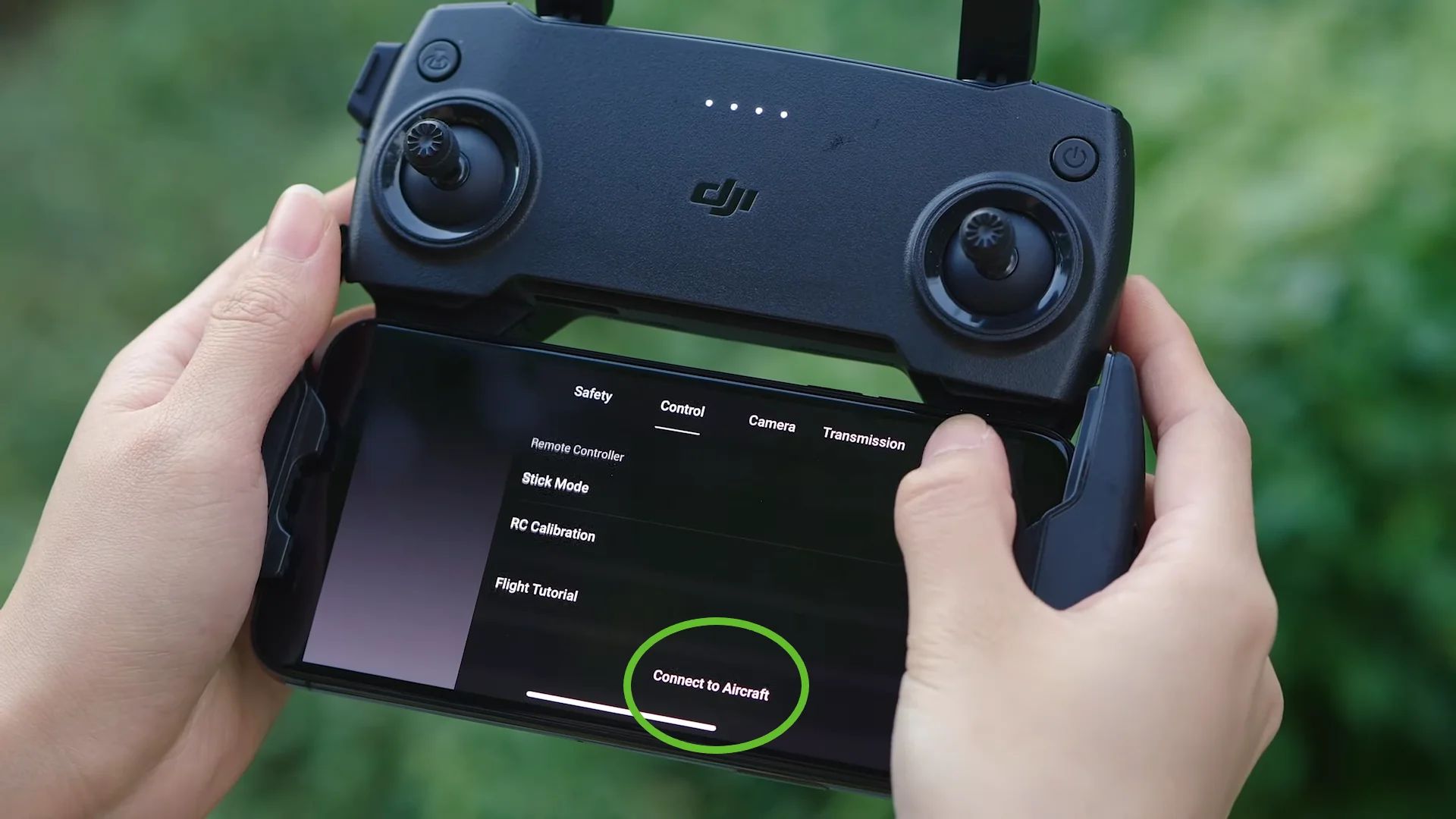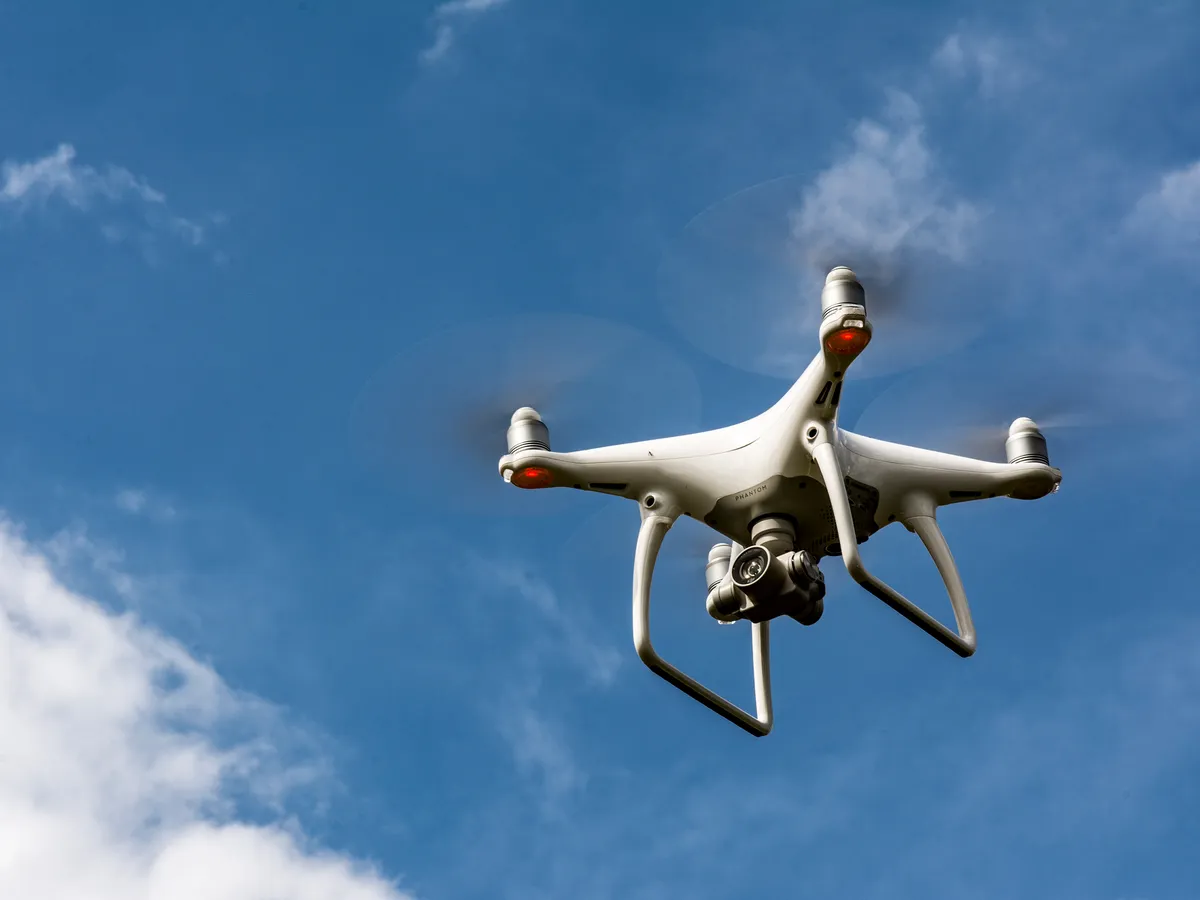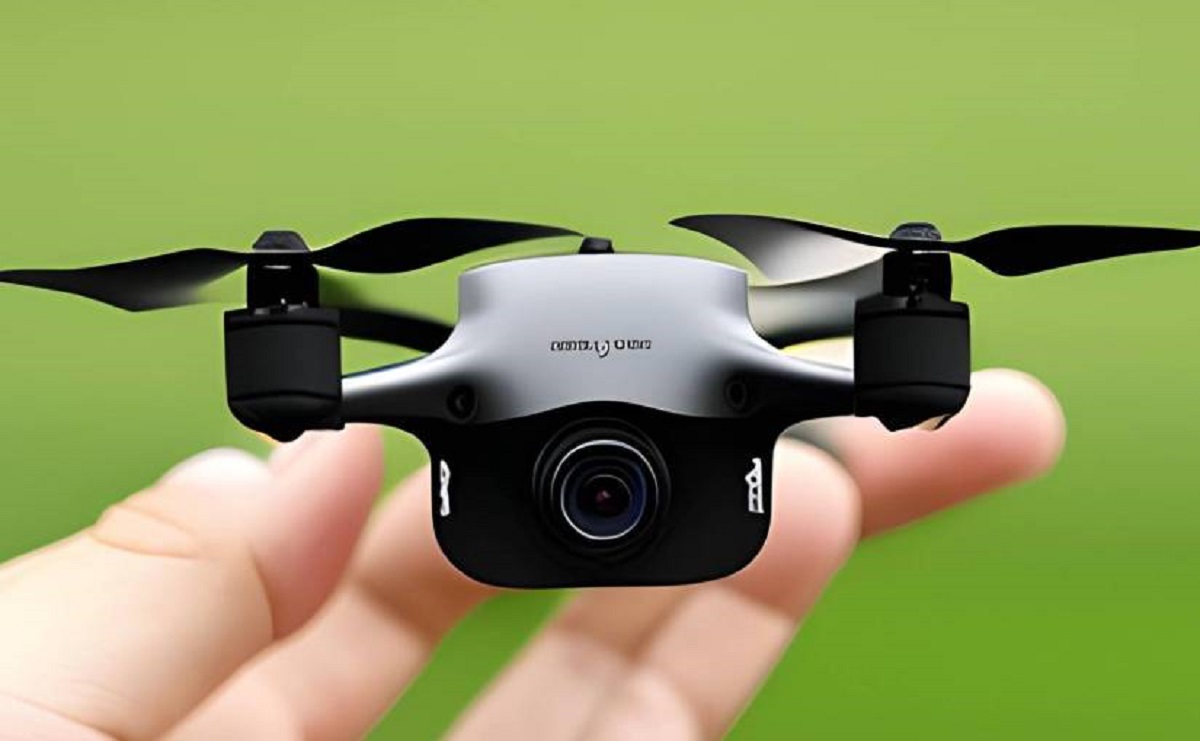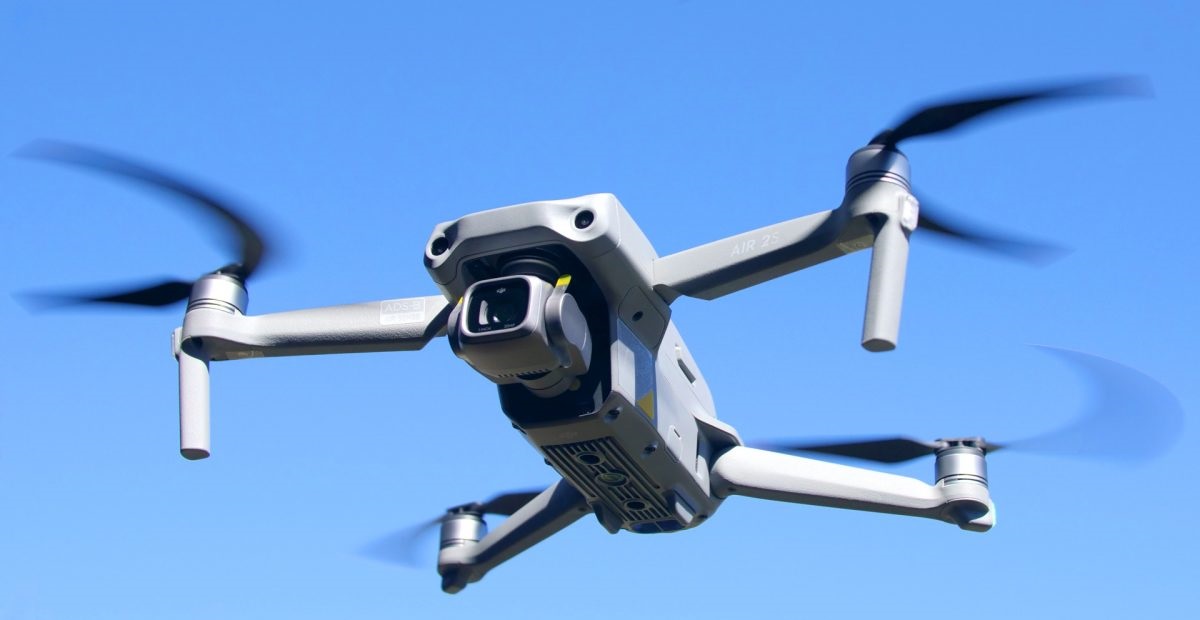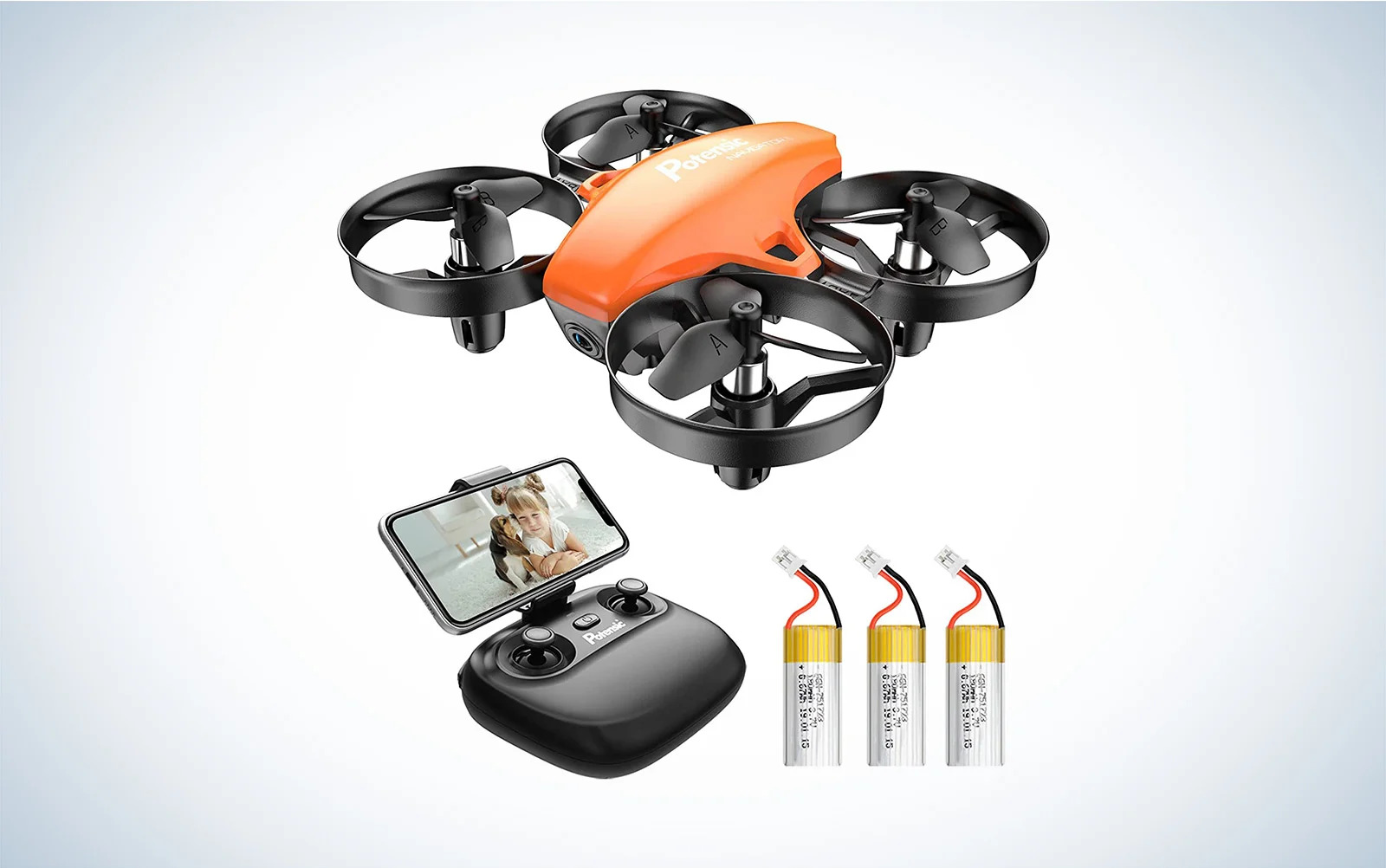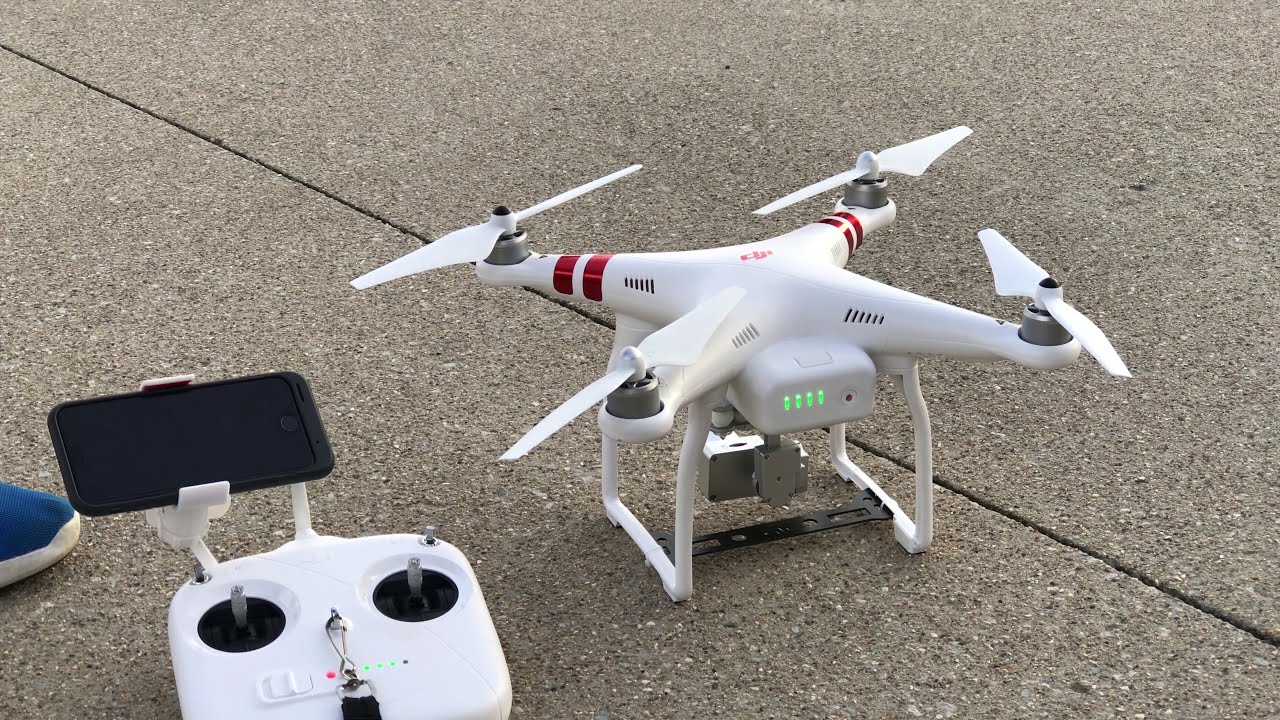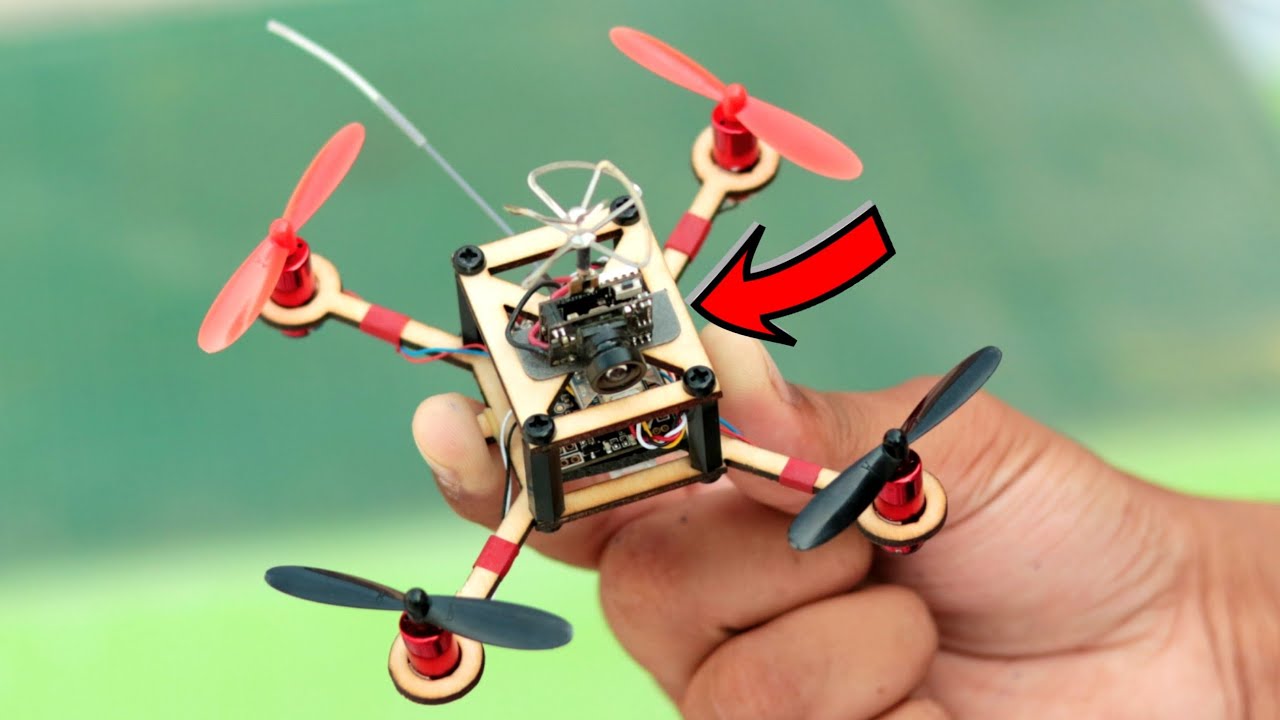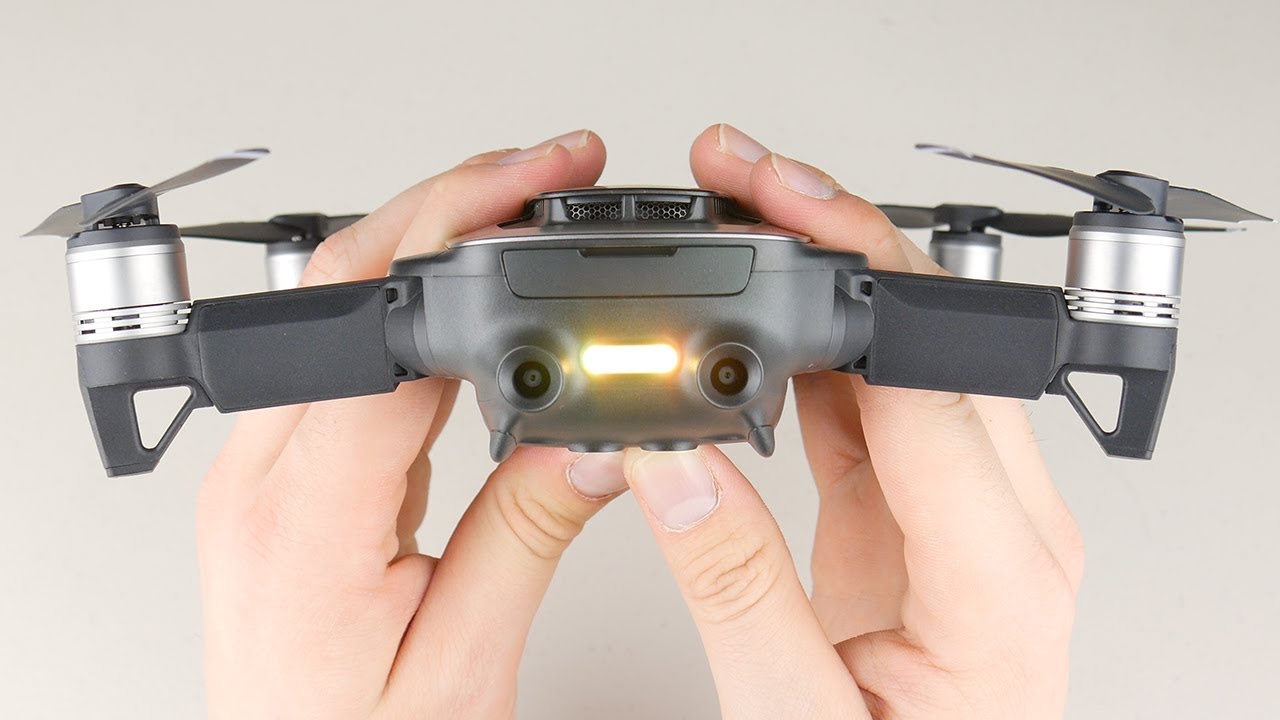Introduction
Welcome to the exciting world of flying a Propel Drone! Whether you’re a beginner or have some experience with quadcopters, this guide will provide you with the essential knowledge and techniques to fly your drone with ease and confidence.
Flying a drone can offer a unique perspective and thrilling experience. Propel Drones are known for their high performance, stability, and intuitive controls, making them the perfect choice for enthusiasts of all levels. Before you embark on your drone flying adventure, it is important to familiarize yourself with some key aspects and safety precautions.
In this guide, we will explore the necessary steps to safely and efficiently fly your Propel Drone. We will cover everything from understanding the key components of the drone, to charging the batteries, to mastering basic and advanced flight techniques.
It is essential to prioritize safety while operating a drone. Always abide by the rules and regulations set forth by the Federal Aviation Administration (FAA) or your local aviation authority. Additionally, be mindful of your surroundings, avoid flying near restricted airspace, and respect the privacy of others.
Throughout this guide, we will provide step-by-step instructions, helpful tips, and troubleshooting advice to ensure a smooth and enjoyable flying experience. So, fasten your seatbelt – metaphorically speaking – and get ready to take to the skies with your Propel Drone!
Now, let’s dive into the world of Propel Drones and learn how to unleash their full potential.
Understanding the Propel Drone
Before you start flying, it’s essential to have a basic understanding of the components and features of your Propel Drone. Knowing the different parts will not only help you operate the drone more effectively but also troubleshoot any potential issues that may arise. Let’s take a closer look at the key elements of the Propel Drone:
- Body: The body of the drone houses all the essential components, including the motors, propellers, and electronic circuitry. It is usually made of durable materials like plastic or carbon fiber to withstand crashes and impacts.
- Propellers: Propel Drones typically have four propellers, arranged in pairs known as quadcopters. The propellers generate the thrust needed to lift and maneuver the drone in the air. It’s important to ensure that the propellers are securely attached and in good condition before each flight.
- Camera: Some Propel Drone models come equipped with a built-in camera or have the option to attach one. The camera allows you to capture stunning aerial photos and videos. Familiarize yourself with the camera controls and settings to make the most of this feature.
- Landing Gear: The landing gear provides stability and protection for the drone when taking off and landing. It’s essential to ensure that the landing gear is intact and in good working condition to prevent any damage to the drone or the surroundings.
- Flight Controller: The flight controller is the brain of the drone that processes information from various sensors and adjusts the motors’ speed and direction to maintain stability and respond to your commands. Understanding the flight controller’s functionality will help you control the drone more effectively.
- Remote Control: The remote control, also known as the transmitter, is the device you use to pilot the drone. It communicates wirelessly with the drone and allows you to control its movement and access various flight modes and features. Get familiar with the buttons, joysticks, and switches on the remote control to operate the drone smoothly.
By understanding the key components of the Propel Drone, you’ll be better equipped to operate and troubleshoot any issues that may arise during your flights. Now that you’re familiar with the drone’s anatomy, let’s move on to the crucial safety precautions you need to consider.
Safety Precautions
Ensuring the safety of yourself, others, and the surrounding environment should be your top priority when flying a Propel Drone. Adhering to safety precautions not only protects you from accidents, but it also helps maintain the reputation of responsible drone pilots. Before taking off, make sure to follow these essential safety guidelines:
- Read the User Manual: Familiarize yourself with the drone’s user manual to understand its specific safety guidelines and operational requirements. This will provide you with important information about the drone’s limitations and capabilities.
- Check Local Regulations: Stay informed about the drone regulations in your area. Laws regarding drone usage may vary depending on your location. Make sure to abide by these rules and obtain any necessary permits or licenses.
- Fly in Designated Areas: Choose an appropriate flying location, preferably an open space away from people, buildings, and other obstacles. Public parks and designated flying areas are great options where drone flying is permitted.
- Maintain Visual Line of Sight: Always keep your drone within your line of sight while flying. This allows you to monitor its position and react to any potential hazards effectively.
- Be Aware of Weather Conditions: Check the weather forecast before flying. Avoid flying in strong winds, rain, or severe weather conditions that could affect the stability and control of your drone. Also, be cautious of humidity and temperature limits mentioned in the user manual.
- Respect Privacy and Personal Space: When flying your drone, be considerate of others’ privacy. Avoid recording or flying over private property without permission.
- Keep a Safe Distance: Maintain a safe distance from people, animals, and moving vehicles. This reduces the risk of collisions and ensures the safety of both the drone and those around you.
- Stay Away from No-Fly Zones: Familiarize yourself with no-fly zones in your area, such as airports, military installations, and restricted airspace. Never fly your drone in these areas as it can pose a serious risk to aviation and national security.
- Inspect and Maintain your Drone: Regularly inspect your drone for any signs of damage or wear. Ensure that the propellers are securely attached, the batteries are in good condition, and all other components are functioning properly. Follow the manufacturer’s maintenance guidelines to keep your drone in optimal condition.
- Use Pre-flight Checklist: Before each flight, develop a pre-flight checklist to ensure you haven’t missed any crucial steps. This includes checking the battery levels, remote control signal strength, GPS signal, and other important parameters.
By following these safety precautions, you can enjoy flying your Propel Drone with peace of mind, knowing that you are minimizing risks and operating responsibly. Now that we’ve covered the safety aspect, let’s move on to the next step – charging and installing the batteries.
Charging and Installing Batteries
Properly charging and installing the batteries of your Propel Drone is essential for an uninterrupted and enjoyable flying experience. Follow these steps to ensure you are doing it correctly:
- Check Battery Compatibility: Verify that the batteries you are using are compatible with your specific Propel Drone model. Refer to the user manual for the recommended battery type and specifications.
- Inspect Battery and Connectors: Carefully examine the battery and connectors for any signs of damage. If you notice any swelling, cracks, or other abnormalities, do not use the battery and replace it with a new one.
- Connect the Charging Cable: Connect the charging cable to the battery charger and plug the charger into a power outlet. Ensure you are using the charger provided by the manufacturer or a compatible third-party charger recommended for your drone model.
- Attach the Battery: Attach the battery to the drone’s designated battery compartment, making sure it is securely snapped or fastened in place. Follow the instructions provided in the user manual for the correct installation process specific to your drone.
- Monitor the Charging Process: During charging, keep an eye on the battery and charger. Most chargers have LED indicators that show the charging status. It is important to let the battery charge fully according to the recommended charging time mentioned in the manual.
- Unplug Charger and Disconnect Battery: Once the battery is fully charged, unplug the charger from the power outlet and disconnect it from the battery. Avoid overcharging the battery, as it may lead to reduced battery life or even damage.
- Store Batteries Safely: When not in use, store your batteries in a safe and dry place, away from extreme temperatures or moisture. It is recommended to use a fireproof bag or container specifically designed for battery storage to minimize the risk of fire or accidents.
- Regularly Inspect Batteries: Prior to each flight, inspect the batteries again for any signs of damage or abnormality. If you notice any issues, replace the battery immediately to ensure safe and reliable operation.
Charging and installing batteries are crucial steps in preparing your Propel Drone for flight. By following these guidelines, you can ensure the longevity of your batteries and maximize your flying time. Now, let’s move on to the next step—calibrating the Propel Drone.
Calibrating the Propel Drone
Calibrating your Propel Drone is an essential step to ensure accurate flight control and stability. Calibration involves configuring the drone’s internal sensors to provide precise readings. Follow these steps to calibrate your Propel Drone:
- Find a Level Surface: Start by placing your drone on a flat and level surface. This will help the internal sensors detect the correct orientation.
- Power on the Drone: Switch on the drone by pressing the power button. Make sure the remote control is turned on as well.
- Pair the Drone and Remote: Follow the instructions in the user manual to pair your drone with the remote control. This step ensures that the remote control communicates properly with the drone.
- Access Calibration Mode: Most Propel Drones have a specific button combination or command sequence to enter the calibration mode. Refer to the manual to determine the correct method for your drone model.
- Start the Calibration Process: Once in the calibration mode, follow the instructions displayed on the remote control or provided in the manual. This typically involves tilting and rotating the drone in specific directions to calibrate the sensors.
- Complete the Calibration: After following the required sequence of movements, the drone will confirm that the calibration process is complete. This may be indicated by LED lights, beeping sounds, or a message on the remote control screen.
- Verify Calibration: Test the drone’s stability by hovering it in place and moving it in different directions. If the drone maintains a stable and controlled flight, the calibration was successful.
- Recalibrate if Necessary: If you notice any instability or abnormal behavior, you may need to recalibrate the drone. Follow the same steps outlined above and pay attention to the correct sequence of movements required for optimal calibration.
Calibrating your Propel Drone is a critical step to ensure smooth and accurate flight. It helps the drone maintain stability, responsiveness, and precise control. By performing this calibration process regularly, you can enjoy a more enjoyable and controlled flying experience. Next, we will explore how to effectively control the drone using the remote control.
Controlling the Drone with the Remote
The remote control is your gateway to navigating and maneuvering your Propel Drone. Understanding its buttons, joysticks, and functions will enable you to control the drone with precision and ease. Let’s explore how to effectively use the remote control:
- Familiarize Yourself with the Controls: Take the time to understand the layout and functionality of the remote control. Identify the important buttons, such as the power button, emergency stop button, camera controls (if applicable), and navigation controls.
- Power on the Remote Control and Drone: Ensure that both the remote control and the drone are powered on and properly paired. Make sure the batteries in the remote control are fully charged for optimal performance.
- Throttle and Directional Controls: The left joystick, typically located on the remote control’s lower half, is used to control throttle or vertical movement and the drone’s yaw or rotational movement. The right joystick controls the drone’s pitch and roll. Practice moving these joysticks smoothly to achieve precise control.
- Trim Adjustments: The remote control may have trim adjustment buttons, usually located near the joysticks. These buttons allow you to fine-tune the drone’s hovering stability and ensure it remains level in flight. Adjust the trims as needed to achieve an optimal flying experience.
- Flight Modes: Many Propel Drones offer different flight modes, such as beginner mode, altitude hold, or headless mode. Refer to the user manual to understand how to access and switch between these modes. Each mode provides unique features designed to enhance your flying experience.
- Practice Basic Maneuvers: Start with simple maneuvers such as ascending, descending, hovering, and basic forward and backward movement. Gradually progress to more complex movements like banking, turning, and figure-eight patterns. Practice in an open space to develop your piloting skills.
- Use the Return-to-Home Feature: Many Propel Drones have a return-to-home feature that allows the drone to automatically return to its take-off point with the push of a button. This can be useful in case of low battery, signal loss, or when needed to land the drone safely.
- Understand Flight Indicators: Pay attention to the LED lights on the drone, which indicate important information such as battery level, GPS signal strength, and flight mode. Being aware of these indicators can help you make informed decisions during flight.
- Practice, Practice, Practice: Becoming proficient in drone piloting takes practice. Set aside regular practice sessions to improve your skills, gain confidence, and explore the full potential of your Propel Drone.
By familiarizing yourself with the remote control and regularly practicing different maneuvers, you will gain the expertise needed to confidently operate your Propel Drone. With the basics covered, let’s move on to learning some fundamental flying techniques!
Basic Flying Techniques
Mastering basic flying techniques is crucial to ensure smooth and controlled flights with your Propel Drone. This section will guide you through some fundamental techniques to get you started:
- Takeoff and Landing: Find an open area with enough space for takeoff and landing. Slowly increase the throttle until the drone lifts off the ground and hovers. To land, gently reduce the throttle and guide the drone down smoothly.
- Hovering: Practice hovering your drone at a fixed position by adjusting the throttle and gently making any necessary corrections. Maintaining a stable hover is essential for capturing clear photos or videos.
- Ascending and Descending: Increase the throttle to ascend and decrease it to descend. Use small adjustments to maintain a smooth vertical flight, and be mindful of obstacles or wind that may affect your drone’s stability.
- Forward and Backward Movement: Use the pitch control on the remote control to move the drone forward and backward. Start with small movements and gradually increase speed as you gain confidence.
- Turning: Use the roll control to turn your drone left or right. Start with gentle turns and increase the speed and angle as you become more comfortable. Practice maintaining a consistent radius during turns.
- Strafing: Some Propel Drones allow sideways movement, known as strafing. Utilize the roll control to move the drone left or right while keeping the heading stable. This technique can be useful for capturing dynamic shots or navigating around obstacles.
- Flight Patterns: Experiment with flight patterns like circles, figure eights, or orbits. These patterns add creativity to your flights and give you a better understanding of the drone’s maneuverability.
- Obstacle Avoidance: As you progress, practice flying around obstacles while maintaining stability and control. This skill is essential for flying safely in challenging environments.
- Smooth Transitions: Aim for smooth and controlled transitions between movements. Avoid abrupt changes in direction, altitude, or speed, as they can cause instability or affect the quality of captured media.
- Flight Modulation: Experiment with different flight modes offered by your Propel Drone, such as altitude hold or headless mode. Each flight mode offers unique features that vary the drone’s behavior and adapt to different scenarios.
Remember, practice is key to improving your flying skills. Start with basic maneuvers and gradually progress to more advanced techniques. Focus on maintaining stability, precision, and control in your flights. With these foundational skills, you’ll be ready to explore more advanced flying techniques and perform aerial stunts, which we’ll cover in the next section!
Advanced Flying Techniques
Once you’ve mastered the basic flying techniques with your Propel Drone, it’s time to take your skills to the next level with more advanced maneuvers and techniques. This section will introduce you to some exciting techniques:
- Banked Turns: Instead of making flat turns, try banking your Drone by tilting it along with the turn direction. This technique adds a dynamic and cinematic effect to your aerial footage.
- Orbiting: Orbiting involves flying your drone in a circular path around a specific subject or point of interest. It requires controlling both the drone’s yaw and altitude to maintain a consistent distance and height during the orbit.
- Fly-throughs: Fly-throughs involve navigating your drone through tight or challenging spaces, such as tree branches or gaps between structures. Precision control is crucial in performing smooth and controlled fly-throughs.
- Power Slides: Power slides add a dramatic effect to your flights. Execute a sharp turn at a high speed while slowly reducing throttle. This technique causes the drone’s momentum to carry it through the turn while maintaining control.
- Flip and Roll: Some Propel Drones have the ability to perform flips and rolls. Execute these stunts by using the dedicated buttons or joystick commands to flip the drone forward, backward, or sideways. Practice these stunts in an open area to avoid accidents.
- Inverted Flight: With advanced drones, you can fly the drone upside down or perform inverted maneuvers. This requires precise control and an understanding of the drone’s inverted flight capabilities.
- Follow Me Mode: If your Propel Drone supports it, try utilizing the Follow Me mode. This feature allows the drone to autonomously track and follow a moving subject by utilizing GPS or visual tracking technology.
- Waypoint Navigation: Advanced drones may offer waypoint navigation, enabling you to preselect a series of GPS locations for the drone to follow autonomously. This technique is perfect for capturing smooth and controlled footage.
- Advanced Camera Control: If your Propel Drone comes with a camera, explore the advanced camera controls, such as adjusting exposure, white balance, and camera angles. These features allow you to capture professional-quality aerial imagery and footage.
- Precision Landings: Challenge yourself to perform precision landings by landing the drone on specific targets or designated landing pads. Practice controlling the descent rate and maintaining stability for a smooth and accurate landing.
Remember, advanced flying techniques require experience, precision, and a deep understanding of your drone’s capabilities. Always prioritize safety and gradually progress as you become more proficient. Explore these advanced maneuvers to enhance your aerial photography and videography skills. With dedication and practice, you’ll be able to impress and captivate your audience with your piloting abilities. Now, let’s move on to learning how to perform exciting aerial stunts with your Propel Drone!
Performing Aerial Stunts
Performing aerial stunts with your Propel Drone can add an element of excitement and creativity to your flights. These stunts require skill, practice, and an understanding of your drone’s capabilities. Let’s explore some thrilling aerial stunts you can try:
- Barrel Rolls: Execute a barrel roll by quickly pitching or rolling your drone sideways while maintaining forward momentum. This maneuver creates an exhilarating and dynamic rolling motion in the air.
- Power Loops: Perform a power loop by gaining altitude, tilting the drone backward, and applying full throttle to create a loop in the air. This maneuver generates an impressive top-down perspective of the surroundings.
- Vertical Climbs and Dives: Push your drone to its limits by executing sharp vertical climbs and dives. Ascend rapidly until your drone reaches maximum altitude, then descend in a controlled dive for a thrilling aerial display.
- Split S Maneuver: The split S maneuver involves flying straight ahead, performing a half loop, and then rolling the drone upright again. This maneuver creates a smooth and seamless inversion in the flight path.
- Flips and Tumbles: Show off your drone’s agility by performing acrobatic flips and tumbles. Execute quick and precise flips in different directions, showcasing the drone’s ability to rotate and maneuver in the air.
- Knife-Edge Flying: If your drone supports inverted flight, explore knife-edge flying. Maintain the drone in a sideways position, with one wing pointing towards the ground, as you navigate through the sky with precision.
- Acrobatic Combination: Combine multiple stunts and maneuvers to create a captivating aerial routine. Experiment with different sequences, transitions, and timing to choreograph an impressive display of your piloting skills.
- Flashing Lights and LED Effects: Some Propel Drones are equipped with flashing lights or LED effects. Utilize these features to enhance your stunts and create stunning light displays in the sky.
- Stunt Challenge: Challenge yourself to develop creative stunt routines and compete with fellow drone enthusiasts. Set goals, create obstacle courses, and share your impressive stunts to inspire others in the drone community.
- Capture Aerial Footage: While performing these stunts, consider capturing aerial footage or photos to document your exciting flights. Experiment with different camera angles and settings to capture the best possible shots of your stunts.
Performing aerial stunts adds a thrilling and artistic dimension to your flying experience. However, always prioritize safety and make sure you have enough space and clear surroundings to execute these maneuvers. Practice in an open area away from people, buildings, and obstacles. With time and practice, you’ll become more skilled at executing these stunts and creating unique aerial displays with your Propel Drone.
Now that you’re familiar with performing aerial stunts, let’s move on to the next section, where we’ll discuss troubleshooting common issues that may arise while flying your drone.
Troubleshooting Common Issues
While flying your Propel Drone, you may encounter some common issues that can disrupt your flying experience. It’s important to be familiar with these issues and know how to troubleshoot them effectively. Let’s explore some common problems and their possible solutions:
- Limited Flight Time: If you are experiencing shorter flight times than expected, check your battery health and ensure it’s fully charged. Avoid flying in extreme weather conditions or high winds, as they can drain the battery more quickly. Also, consider carrying spare batteries for extended flying sessions.
- Poor GPS Signal: If your drone relies on GPS for stable flight and it’s experiencing poor signal strength, ensure you are flying in an open area with clear visibility to the sky. Avoid flying near tall buildings, dense trees, or areas with electromagnetic interference that can disrupt the GPS signal.
- Lost Connection to Remote Control: If you lose connection to your drone’s remote control, try re-pairing them. Ensure the remote control and drone are fully charged and within the recommended control range. Avoid flying in areas with heavy Wi-Fi or radiofrequency interference.
- Unstable Hovering: If your drone is having difficulty maintaining a stable hover, recalibrate the internal sensors. Ensure that the drone’s firmware is up to date, as manufacturers often release updates to improve stability. Also, check for any debris or damage that may affect the propellers’ performance and clean or replace them if necessary.
- Erratic or Drifting Flight: If your drone is flying erratically or drifting in a particular direction, calibrate the compass. Flying in areas with metal structures or strong magnetic fields can affect the drone’s compass calibration. Recalibrating the compass can help resolve these issues.
- Propeller Issues: If you experience vibrations, wobbling, or unusual noises during flight, check the propellers for any damage or imbalance. Replace damaged propellers and ensure they are securely attached. Balancing the propellers can also help improve the flight performance.
- Camera Malfunctions: If you encounter camera malfunctions, ensure that the camera is securely attached and the cables are properly connected. Check the camera settings and make sure you’re using the appropriate storage media and that it has enough free space. If the issue persists, consider contacting the manufacturer for further assistance.
- Flight Restriction Violations: If you inadvertently violate flight restrictions or fly into a restricted airspace, land your drone immediately. Familiarize yourself with airspace regulations and use apps or online resources to check for any restricted areas before flying. Always abide by the legal requirements and maintain safety and respect for others.
- Crashes or Impact Damage: Accidents happen, and if your drone crashes or sustains impact damage, carefully examine the drone for any visible damage. Inspect all the components, including the motors, propellers, and body, and replace any damaged parts. It’s crucial to perform a thorough inspection before each flight to ensure the drone is safe to fly.
- Software or Firmware Issues: If you encounter software or firmware issues, check for any updates available for your drone’s firmware, remote control, and supporting apps. Updated software often includes bug fixes and performance enhancements. Follow the manufacturer’s instructions to update the software correctly.
By understanding and troubleshooting these common issues, you can quickly address and resolve any problems you may encounter while flying your Propel Drone. Remember to consult the user manual or contact customer support if the issue persists or if you need further assistance. Stay proactive and diligent in maintaining your drone to ensure safe and enjoyable flights.
Now that we’ve covered the essential troubleshooting techniques, let’s conclude this guide and reflect on the valuable skills and knowledge you’ve gained to become a skilled pilot of your Propel Drone.
Conclusion
Congratulations on acquiring the knowledge and skills to become a skilled pilot of your Propel Drone! Throughout this guide, we have covered the essential steps to safely and efficiently fly your drone, from understanding its components to performing advanced maneuvers and troubleshooting common issues. You are now equipped with the expertise to embark on thrilling drone flights and capture stunning aerial footage.
Remember, safety should always be your top priority. Adhere to local regulations, prioritize the well-being of others, and maintain respect for privacy and restricted airspace. By operating your drone responsibly, you contribute to the positive perception of drone enthusiasts and help promote safe and enjoyable flying experiences.
Continue to practice and refine your flying techniques. The more you fly, the more comfortable and skilled you will become. Push the boundaries to explore new flying maneuvers, create captivating aerial stunts, and capture breathtaking footage. Share your artwork and experiences with the drone community to inspire and learn from others.
Regularly check for firmware and software updates from the manufacturer to ensure your drone performs optimally. Stay informed about the latest advancements in drone technology and follow industry trends to enhance your flying capabilities and stay ahead of the curve.
Lastly, always keep in mind that a responsible and skilled pilot is an ambassador for the drone community. Be courteous to others, educate newcomers, and promote the positive aspects of drone flying.
Now, it’s time to put your newfound knowledge into practice. So, power up your Propel Drone, take to the skies, and embark on amazing aerial adventures!







